Ahh, summer in the South of France. Candy-colored parasols stretched to the horizon. Yachts bobbing in the shimmering sea as sunbathers squeeze in final rays of the day. Alluring as it is to be within toe’s reach of the Mediterranean, there’s another side to the French Riviera. Rising steeply from the sea is the southernmost region of the Alps known as the Maritime Alps. This wilder, earthier side of the French Riviera offers visitors not only amazing opportunities for hiking and other outdoor pursuits, but also access to charming hilltop villages.
Strategically situated above the coastline for both defense and refuge during medieval times, today these ancient towns, with their meandering alleyways and panoramic views, give visitors the perfect excuse to break from lazier seaside pursuits. Here are four alpine villages to check out on your next visit to the Côte d’Azur.
Roquebrune-Cap-Martin: Home to The Oldest Dungeon (and Olive Tree) in France
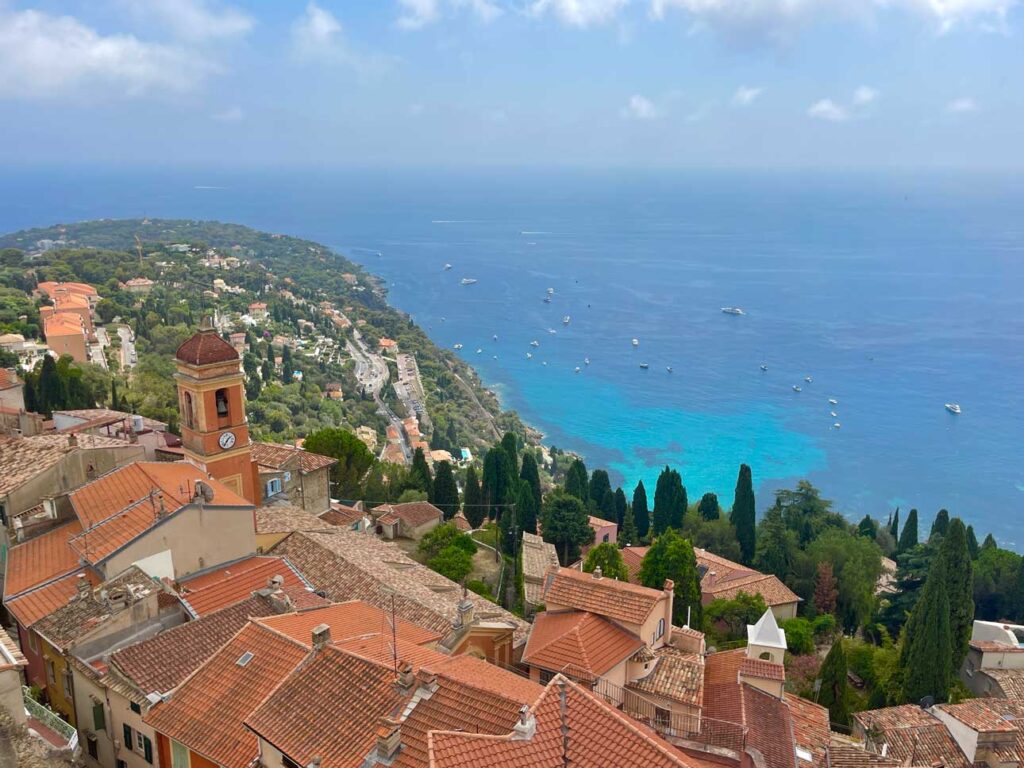
Tucked inconspicuously between the popular coastal towns of Menton and Monaco is delightful Roquebrune-Cap-Martin. Like the nearby but more widely-known Èze, Roquebrune-Cap-Martin has two sections – one along the water, and the other medieval “old town”, known as “Roquebrune-Village”, higher up above the coast. The name Roquebrune literally means “brown rock” for the color of the rocks on which it was built.
Headlining this hilltop gem is an old fortress called Château de Roquebrune that was built in the 10th century. Originally a dungeon – the oldest in France supposedly – it grew to encompass the entire village during the Middle Ages. Today, thanks to careful restoration, the Château de Roquebrune is remarkably intact and well worth a visit.
For a small fee (it was 5€ per person when I went), you can take a self-guided tour and learn about its early days as a fortress, to its possession by the Grimaldi family of Monaco, and eventually in 1921, its transferal to the commune of Roquebrune. Be sure to climb all the way to the top for splendid views of the surrounding terracotta roofs and beautiful bell tower of Sainte-Marguerite Church in old town, out to the Mediterranean, the peninsula of Cap-Martin, and Monaco.
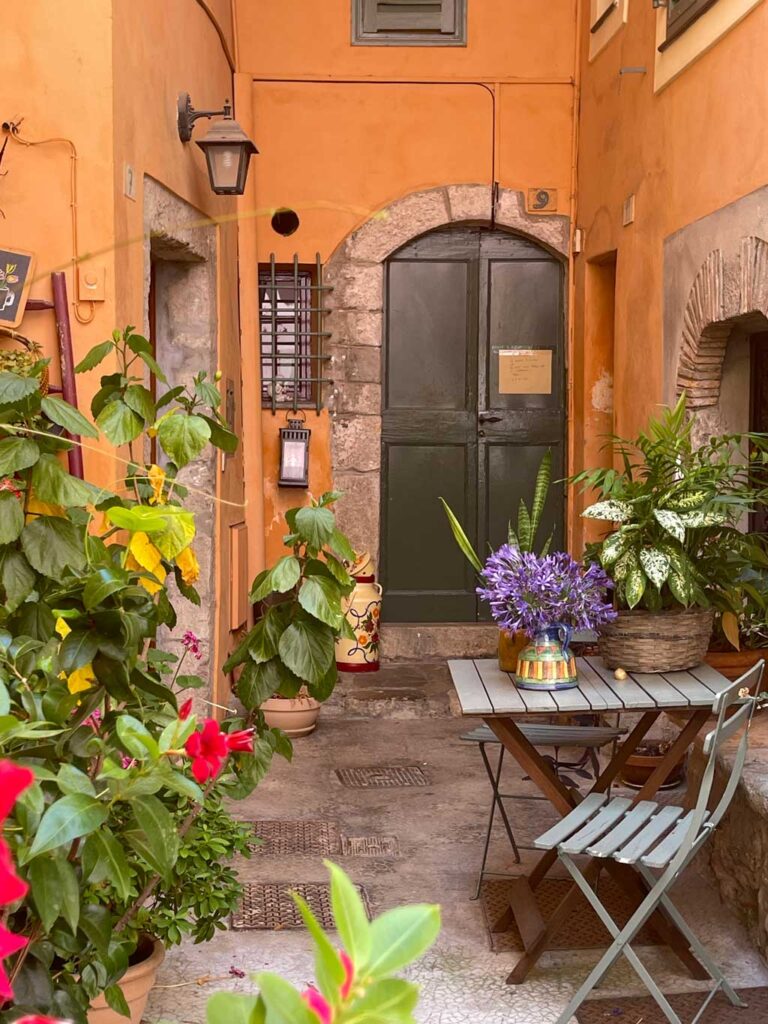
Once you’ve seen the castle, spend some time exploring the village. The large central plaza has more incredible views (better than the views from Èze-Village in my opinion.) There are several outstanding restaurants, including the highly rated La Grotte et l’Olivier and Au Grand Inquisiteur. Speaking of l’olivier, which means olive tree, Roquebrune-Cap-Martin is known for its thousand-year-old olive tree, l’olivier millénaire. Found east of old town along the road to Menton, it is believed to be the oldest tree in France and even in Europe.
How to Get There: By car from Nice, it takes about half an hour following the A8 highway toward Menton, then D2564 off exit 58 in La Turbie. From Menton, it’s only a 15-minute drive, or you can ride Zest bus #24 directly to the village.
Hike to Roquebrune-Village
If you’re up for a thigh-busting adventure, you can climb the series of stairways that lead from the coastal Roquebrune-Cap-Martin train station straight to the village. Zigzagging up the cliff and cutting across the corniche road two or three times, the path is strenuous and takes about 20 to 30 minutes depending on how many times you stop to catch your breath.
Sainte-Agnès: The Highest Coastal Village in Europe
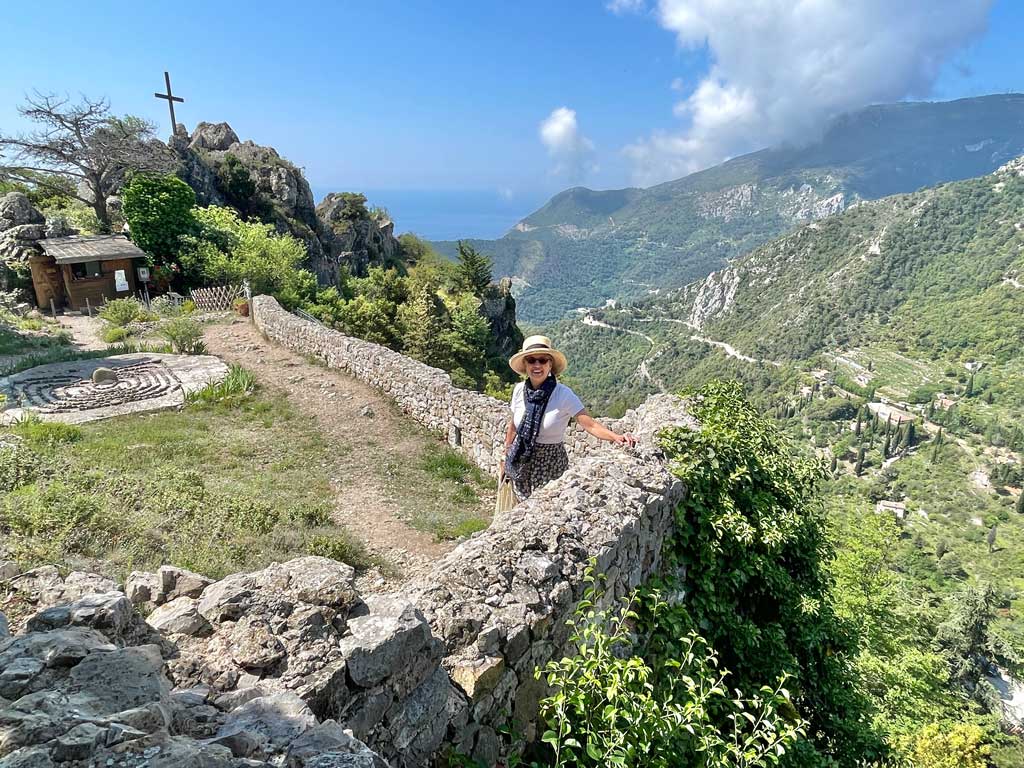
Getting to Sainte-Agnès was a hair-raising adventure. I was too busy fretting to count all the hairpin turns our little bus from Menton – just three miles away as the crow flies – was taking, but it must have been a dozen or more.
Perched on a rocky cliff 2,600 feet (800 meters) above the sea, Sainte-Agnès has the distinction of being the highest coastal village in France, a position that made it strategically vital for defending against invasions in medieval times.
These days, it’s a pleasure to stroll the town’s cobbled streets and vaulted passageways, discovering tucked-away art studios that give Sainte-Agnès a bohemian, almost cosmopolitan, flair. You won’t find a huge selection of touristy shops (or tourists for that matter), but I recommend having a leisurely lunch at one of the town’s terraced restaurants. You’ll feel like you’re on top of the world.
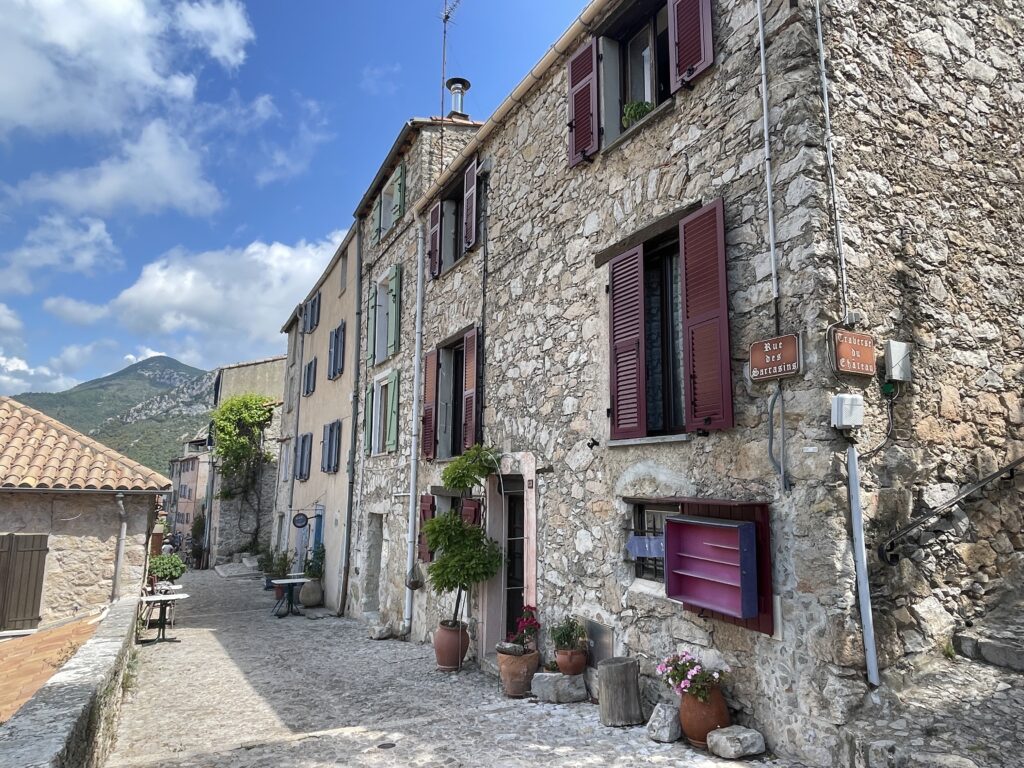
Be sure to visit the Church of Notre-Dame des Neiges (Our Lady of the Snow). Dating in part from 1535, it features an impressive bell tower and rooftop covered in colorful, glazed-enamel tiles.
Near the town center is a short trail that leads to the ruins of a 12th-century fortress, Château Grimaldi. In addition to remnants of the castle walls and a Roman-era cistern, there are lovely gardens tended by local volunteers. While there is no required fee to enter, a donation is appreciated.
From the platform at the top of the castle, the views of the coastline and the surrounding mountains are breathtaking. If you arrive in Sainte-Agnès in the morning, I recommend you do this first, as the village restaurants do not open until noon.
Finally, for those who like war history, another village highlight is Fort Sainte-Agnès. An original and fully equipped military bunker built in the 1930’s, it was part of the Maginot defense system to deter invasion by the Germans during World War II. The museum is open Wednesday through Sunday from February 1 to September 30, but is only open on weekends from October 1 through January 31.
How to Get There: By car from Nice, it’s about a 45-minute drive. Take the A8 highway toward Menton, then follow the D22 and D2565. From Menton, it’s a 20- to 30-minute drive, or you can ride Zest bus #10 up the winding road to the village.
Sospel: A Medieval Oasis in the Mountains
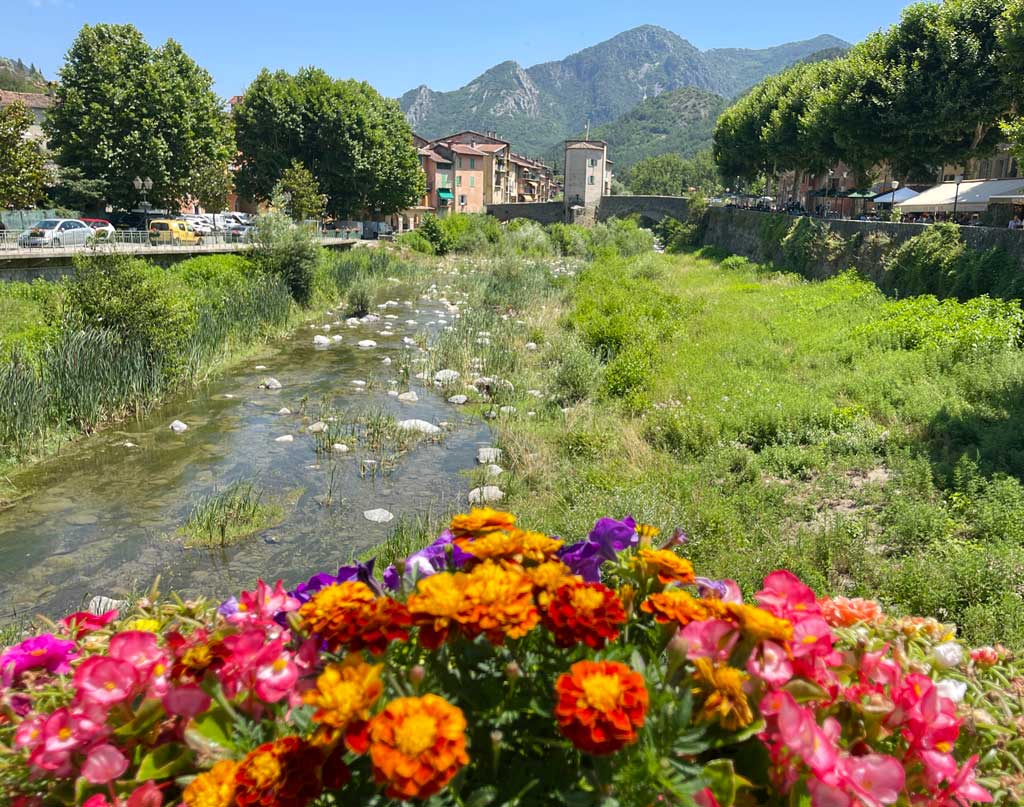
Further away from the coast than both Sainte-Agnès and Roquebrune-Cap-Martin is the town of Sospel. It dates to the 1400’s and served as an important staging post on the royal road from Nice to Turin, Italy, also known as the salt mule road. While probably not as grueling as 5th-century travel, getting here involved another white-knuckle bus ride through the mountains from Menton.
Just south of the Mercantour National Park and out of view of the sea, Sospel feels definitively alpine and is a haven for outdoor enthusiasts. The lush, surrounding landscape is crisscrossed with well-marked trails, ideal for walking, hiking, horse riding, and cycling. The town is also a popular base for canyoning, climbing, and paragliding.
Even if you’re not here for an outdoor adventure, you can easily spend an afternoon wandering the medieval roads. The day I visited with my daughter, we had the streets practically to ourselves and enjoyed strolling past the many building façades decorated with beautiful trompe-l’oeil designs in tones of ocher and brown. For lunch, we sat down at a bustling café by the pretty Bévéra River that flows through town, joining cyclists and bikers taking a break from their respective journeys.

The town’s most famous landmark is the Pont Vieux, an old toll bridge built in the 13th century that travelers used to cross the Bévéra. It was bombed by the Germans during World War II to prevent contact between the French Resistance and the Italians but was renovated after the war and now houses the small tourist office.
Be sure to check out the baroque 13th-century Saint-Michel Cathedral. It presides in a restored square paved with pebbles in original white and grey designs. Inside are two 16th century triptych paintings.
How to Get There: From Menton, Sospel is about a half-hour drive on D2566 to D2566A. You can also take the local Menton Zest bus #15, which takes about 40 minutes. From Nice, the drive is closer to an hour drive. Follow A8 toward Menton, then take exit 59 to D2566. You can also ride the SNCF train from Nice followed by a short walk into the village.
All Aboard the Train de Merveilles!
Sospel is a stop along a popular train route called the Train de Merveilles between Nice and Tende. It’s a magnificent ride through the mountains with panoramic views of the Paillon, Roya, and Bévéra Valleys. During the summer, on the morning train that departs Nice at 9:15 a.m., there’s a guide on board who provides interesting commentary (in French and English) about the engineering feats employed to build this incredible route through the Alps. From Nice to Sospel, the ride is about an hour and half, and all the way to Tende is a little more than two hours. You can find more information about schedule and fares here.
Tende and La Brigue: At The Crossroads of Nature and Art
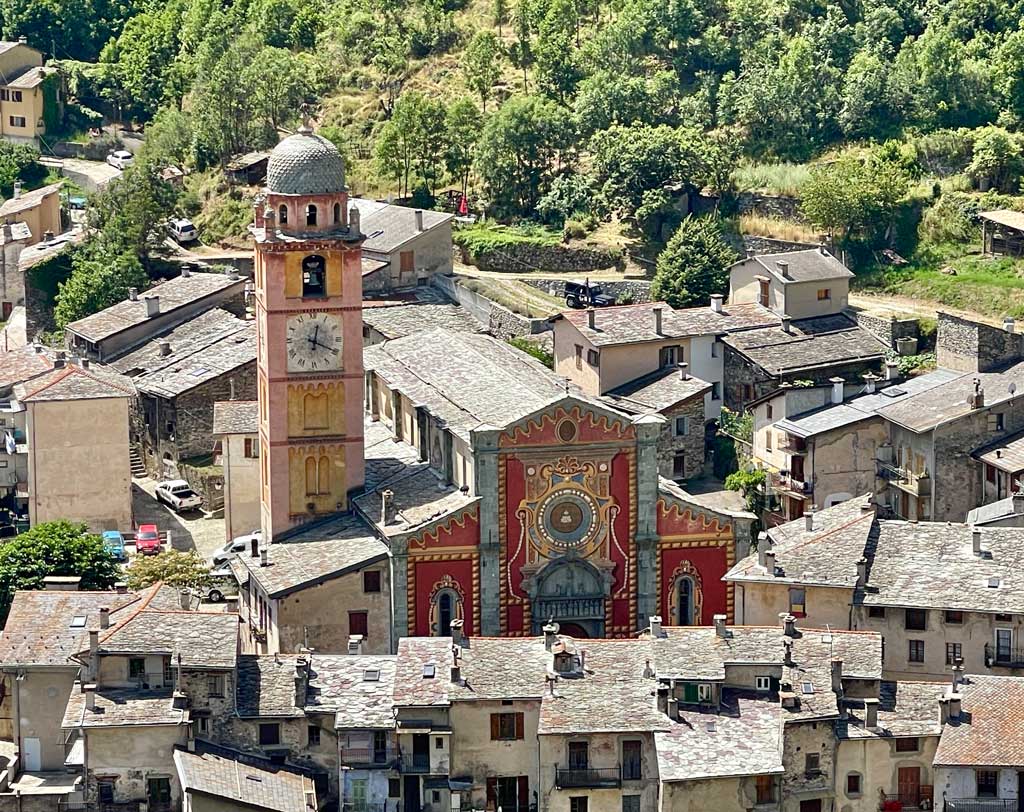
Although the train I mentioned above from Nice technically ends in Cuneo, Italy, most people on the Train de Merveilles excursion go only as far as Tende near the Italian border.
At an elevation of about 2,700 feet, Tende provides a perfect backdrop for hiking and exploring the beauty of the surrounding Mercantour National Park. As you’re going through town, you’ll notice lots of signs directing trekkers to the various paths that crisscross the landscape and connect many of the region’s alpine villages.
Because of its proximity to Italy, Tende has a lot of Italian influences in its architecture, cuisine, and culture. The town, in fact, only became part of France in 1947, and its train station is served by both the French and Italian rail systems.
If you travel to Tende by train, you might want to stop first at the Musée des Merveilles (Museum of Wonders.) Conveniently situated next to the train station, this small museum is known for its displays of prehistoric and medieval artifacts from the area.
For beautiful views overlooking the town and the Roya River running through it, make the short trek to the Fortress of Tende, which dates to the 16th century. From here, you can’t miss the Collegiate Church Notre-Dame de l’Assomption in the heart of old Tende. Completed in the mid-1500s, it features a splendid façade with colorful Baroque ornaments and a Renaissance-era portal carved in green stone from the Roya.
When you’re in Tende, be sure to fit in a visit to the smaller and quieter village of La Brigue. Just four miles away, this mountain village feels like you’ve been transported to another time and place.
Most visitors to La Brigue come to see the famous frescoes that adorn the walls of the Chapelle Notre-Dame des Fontaines, also known as Our Lady of the Fountains because of the nearby natural springs. These beautiful and remarkably well-preserved medieval frescoes depicting scenes from the life of Christ are considered some of the finest examples of Romanesque art in the region. The chapel is open to visitors daily except Thursday between May 1 and September 30. The entrance fee of 4€ (6€ with a guide) helps fund the chapel’s maintenance.
NOTE: The chapel is about two and half miles from the center of La Brigue. You can drive or walk or bike the visitor trail. There’s also a shuttle bus that runs between the La Brigue train station and the chapel that you can book in advance at the Tourist Information office.
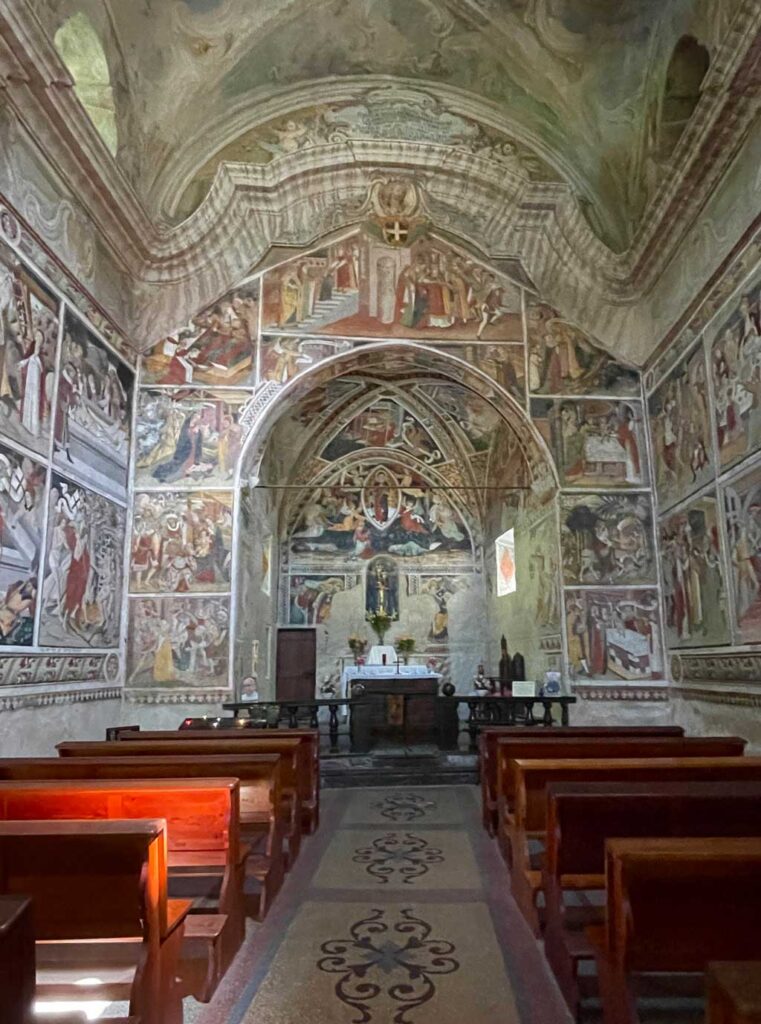
How to Get There: Tende is easy to get to from Nice via the scenic and relaxing Train de Merveilles, which takes a little more than two hours, or by driving along the D6204, which takes around one and half to two hours. From Menton, the drive via highways SS20 and D6204 takes between an hour and an hour and half. You can also take local Zest bus #25, but it takes more than two hours, which for me is too long on a bus navigating steep windy roads. Menton is close to Ventimiglia, so you could also take a French train across the border and then transfer to one of the Italian trains for the hour and a half ride to Tende.
To get from Tende to La Brigue, it’s an easy 10- to 15-minute drive. You can also take a train one stop (about a 10-minute ride) or hop on local Zest bus 25 that takes about 20 minutes.

2 comments
Loved your adventure to these amazing gems! Wonderful details and information! Descriptions make me want to rearrange our fall itinerary in the French Riviera!
Thank you
Thank you so much! It really was a wonderful trip and I hope you get to see some of these beautiful villages. 🙂
Comments are closed.